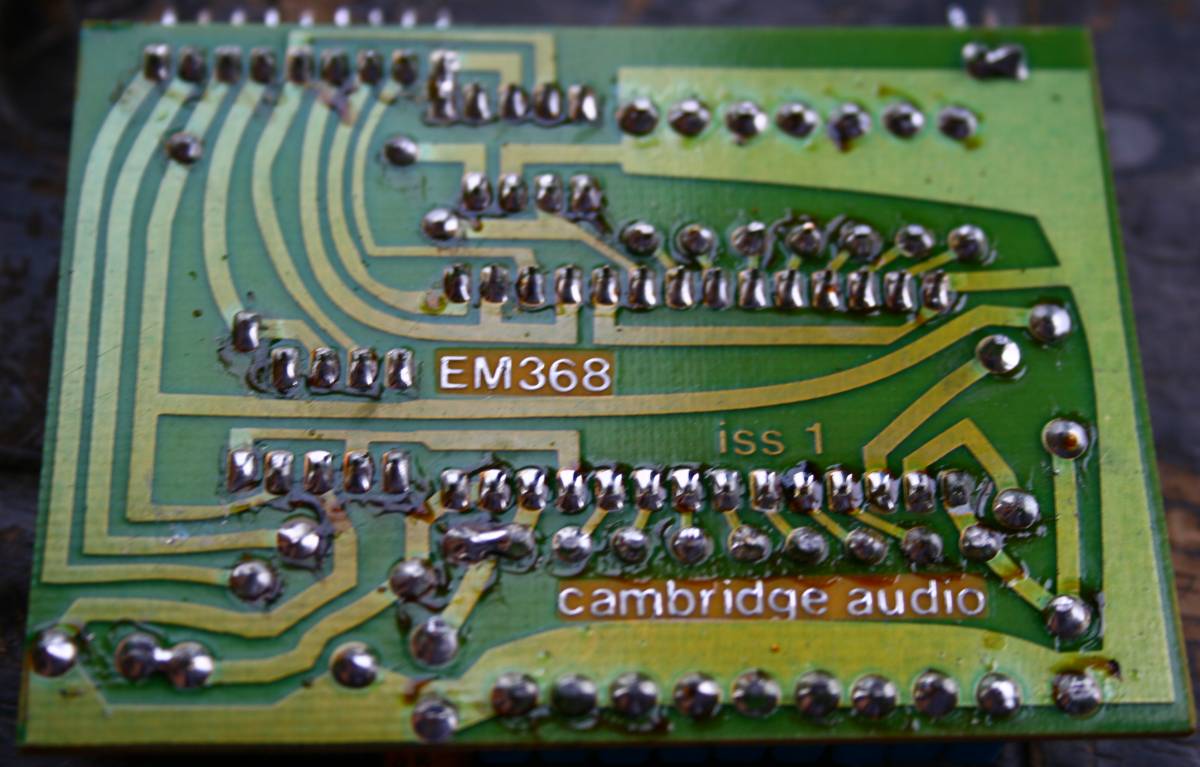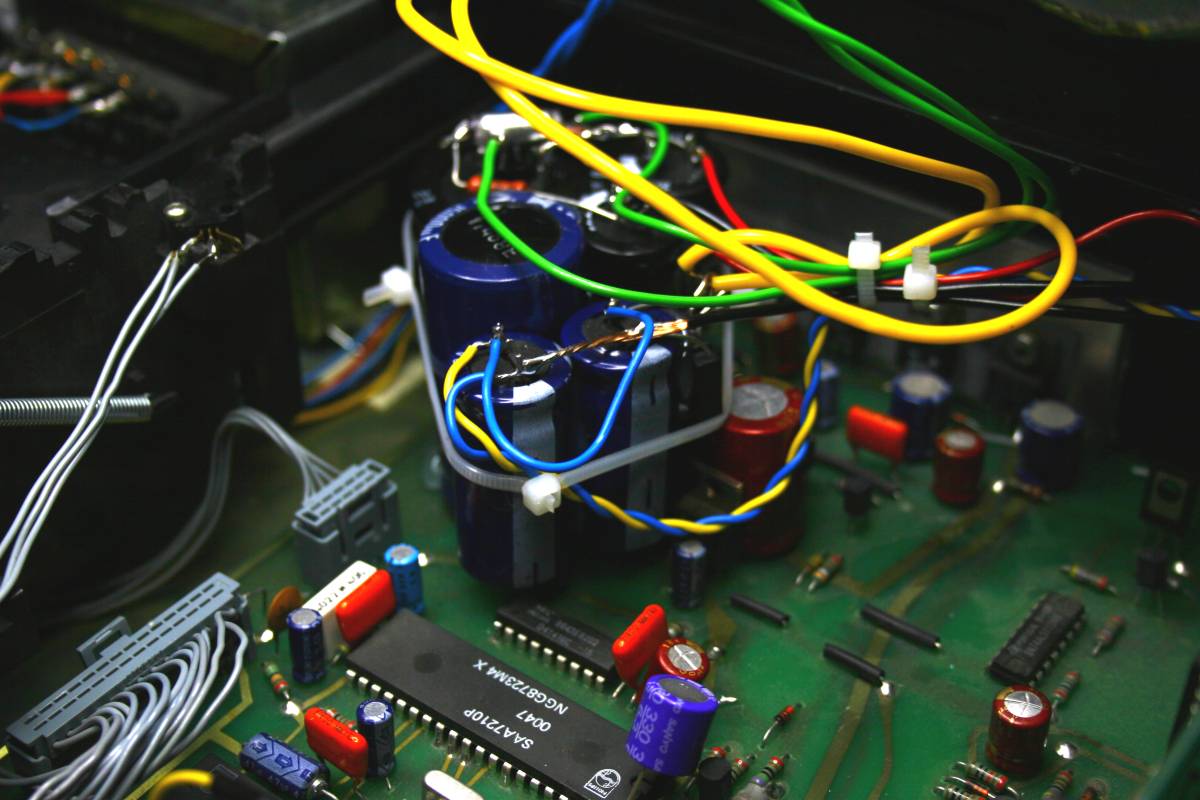Cambridge
CD2
player
Lampization
Sept 08

This ia a player for the die hard lovers of British cottage industry.
For the people who get excited about the Mini Morris, the
original from 25 years ago I mean. If you don't mind hand painted PCB
tracks - this is just for you.
Cambridge CD2 was made as an attempt on cost -no -object -but
-reasonably priced - looks -unimportant player. It is simple yet
sophisticated, just what we like.
The differences from CD3 are bigger than we anticipated. Mechanism is
CDM4 not CDM1 MK2 found in its follower player CD3. The drawer
mechanism is the same, and the laser module only difference is that the
CDM4 is a plastic variant of the same CDM1 mkII. The DACs
are 1541 but not A type (I am still not sure which is actually sounding
better)
The power supply board is much better in the CD3
The looks of both are horrible.

They apparently got carried away with the writing. Who writes so much
on the product these days? It is resembling a tumb stone.
Anyway - 16 times oversampling in this case is an overstatement. We
will however kill that function and reverse to 1X.

You may laugh, but I like the display. It is large, informative and
faultless. Above all - very legible even in the direct sun or darkness.

The full glory of this monster. Jesus Christ !!!

As in CD3 - the four dacs are sitting on four individual assembly
boards. Each chip is powered in parallel, buit the digital feed is NOT
parallel. Each board gets the respective signal shifted by 1/4 of the
"tact".
Each chip has his own decoupling caps - very very nice and large 220 nF
MKP's.
Each board has one opamp per channel (double) giving together 16 single
opamps per player.
How about reducing that mess down to zero ?

The output stage - just two decoupling caps and thats all. (the yellow
thingies)

This is the extra board that shifts the samples by 1/4th and feeds the
4 dac's. I decided to bypass all that innovative thinking and wire the
DACs good old parallel way - all tied together.

The laser mechanism should it fail - is very easy to find for 50 Euros.

The Brits showed great consideration to their customers across the
channel and warned them not to stick wet hands into the 220. How
kind to provide the translation!
Why not German or Italian ? We may only guess.

No comment here. It is self explanatory.
Lampizator job - Cambridge
CD2

The black lines show where the board will have traces cut.
1, 2 and 3 represent the i2s signal - feeding pins 1, 2 and 3 of
TDA1541 respectively.
The upper row of cuts deals with the THREES, and bottom row of cuts -
with ONES. The TWOS are uncut - all parallel.

The re-assembled unit, with directly wired pins 6 and 25 of each TDA
1541.

This is new fully parallel data feed.
The three color wires will fo to SAA7210 demodulator. This will be NOS.

The print side of TDA1541 PCB

These cuts do the following:
- float pins 6 and 25
- and remove DC power from opamps to free the power supply from wasted
demand.

Desoldering suction pump is not an option !

I removed the radiator from SAA7220P/B chip - it doesnt really get THAT
hot.
WARNING: The NOS did not work well. The error flag (visible on this
player) was blinking like crazy, the FF function took one minute to
skip tracks, and the TOC of disk was VERY slow to read.
Apparently I made the player unhappy by going from demodulator directly
to TDA.
So what I did is a compromise: I wired the data from SAA7220 after 4 x
oversampling to the TDA's. I bypassed the extra vertical board.
All operation became flawless again.

Power supply had to be squeezed to keep the lampizator INTERNAL.

The transformer had no other choice but be suspended from top cover.

a pair of russian 6N2P's installed in SRPP config.
R conversion is 25 Ohms. (4 parallel currents)
R cathode is 150 Ohms.

Top view of finished lampizator job.
All is working OK.
The sound of Lampizator in Cambridge CD2 player
Oh man what a job that was. Full of challenges. But the reward is
worth it.
Just think about it: the player has legendary status. The laser is good
and easy to replace. The display is very legible. The TDA is the best
DAC and NOBODY used four parallels before.
Forget the Non-S1 variant - it is not a problem because paralleling
takes care of that. S1, S2 or non-S - makes no difference.
The 4 DACS provide some new dimension to our well familiar TDA sound.
It becomes so full, so rich, so deep and poweful - it is really scary.
Arguably - this may be the best TDA player ever, rivalled only by the
Sony 555ESD, Naim CDS-1, Marantz 94 and the ARCAMs.
Personally, I just loved this sound. Could not get enough of it.
Regrettably - the player isn't mine.




















